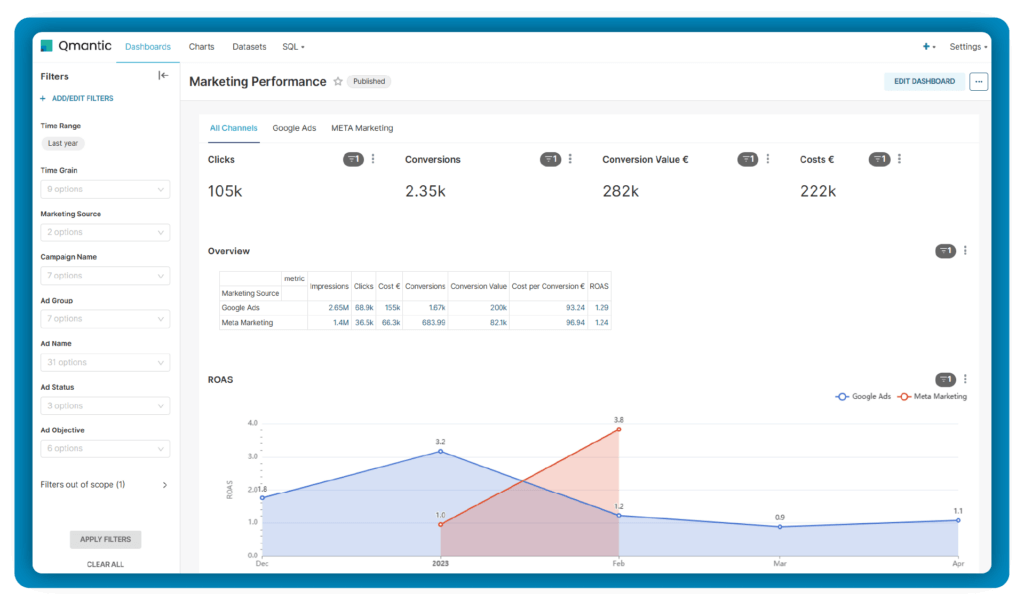In today’s highly-competitive economic environment, businesses must prioritize maximizing return on investment (ROI). Revenue and growth are directly impacted by marketing, but how can you be confident that your marketing efforts are producing the greatest outcomes?
The solution can be found in marketing controlling, a strategic approach that enables companies to maximize their ROI through data-driven tactics. We will explore the idea of marketing controlling and its importance in maximizing ROI in this article. Let’s start now!

Understanding Marketing Controlling
Marketing controlling is a systematic process that helps businesses track, measure, and analyze marketing activities and their impact on ROI. It involves leveraging data and metrics to evaluate the effectiveness and efficiency of marketing campaigns, allowing organizations to make data-driven decisions and optimize their strategies.
If you want to learn more about marketing controlling and how it can help manage and lower marketing costs, you can read our in-depth article on Marketing Controlling.
Data-Driven Decision Making
The use of data-driven decision making is one of the fundamental tenets of marketing controlling. Businesses may learn a lot about consumer behavior, industry trends, and the effectiveness of different marketing activities by gathering and evaluating useful information. With the use of this data, marketers can determine what works and what does not so they can allocate resources more wisely and make strategic changes.
Key Metrics for Marketing Controlling
To effectively implement marketing controlling, businesses need to focus on key performance indicators (KPIs) that directly impact their ROI. Here are some essential metrics to consider:


• Conversion Rate
Measuring the percentage of website visitors or leads that convert into customers provides insights into the effectiveness of your marketing efforts in driving sales.
• Customer Acquisition Cost (CAC)
CAC helps evaluate the cost-effectiveness of acquiring new customers. Additionally by comparing CAC with customer lifetime value (CLV), businesses can assess the profitability of their marketing campaigns.
• Return on Advertising Spend (ROAS)
ROAS measures the revenue generated for every dollar spent on advertising. Even though it helps identify which advertising channels or campaigns are delivering the best results.
• Customer Lifetime Value (CLV)
CLV quantifies the long-term value a customer brings to your business. By understanding the profitability of different customer segments, you can tailor your marketing strategies accordingly.
Implementing Marketing Controlling Strategies
To maximize ROI through marketing controlling, businesses should follow these essential steps:
• Set Clear Goals
Establish specific, measurable goals aligned with your overall business objectives. These goals will serve as benchmarks for measuring marketing performance and ROI.
• Data Collection and Analysis
Implement systems to collect relevant data from multiple sources, such as website analytics, CRM systems, social media platforms, and market research. Analyze the data to gain insights into customer behavior, campaign performance, and market trends.
• Continuous Monitoring
Regularly monitor and evaluate the performance of your marketing campaigns against predefined KPIs. This ongoing assessment allows you to identify areas for improvement and make necessary adjustments promptly.
• A/B Testing
Conduct controlled experiments by testing different marketing strategies or campaign variations simultaneously. A/B testing helps you identify the most effective approaches and optimize your marketing initiatives accordingly.
• Investment Optimization
Use data insights to reallocate your marketing budget strategically. Identify the channels and campaigns that deliver the highest ROI and allocate more resources to those areas.
Conclusion
In today’s data-driven world, marketing controlling has emerged as a vital strategy for businesses looking to maximize their ROI. By adopting a systematic approach to tracking, measuring, and analyzing marketing activities, organizations can make informed decisions and optimize their strategies for better outcomes.
Furthermore to explore the full potential of marketing controlling and leverage data-driven strategies, consider using our comprehensive data platform, Qmantic.
Visit our website at Marketing Controlling to learn more about how Qmantic can help you unlock the power of marketing controlling.





